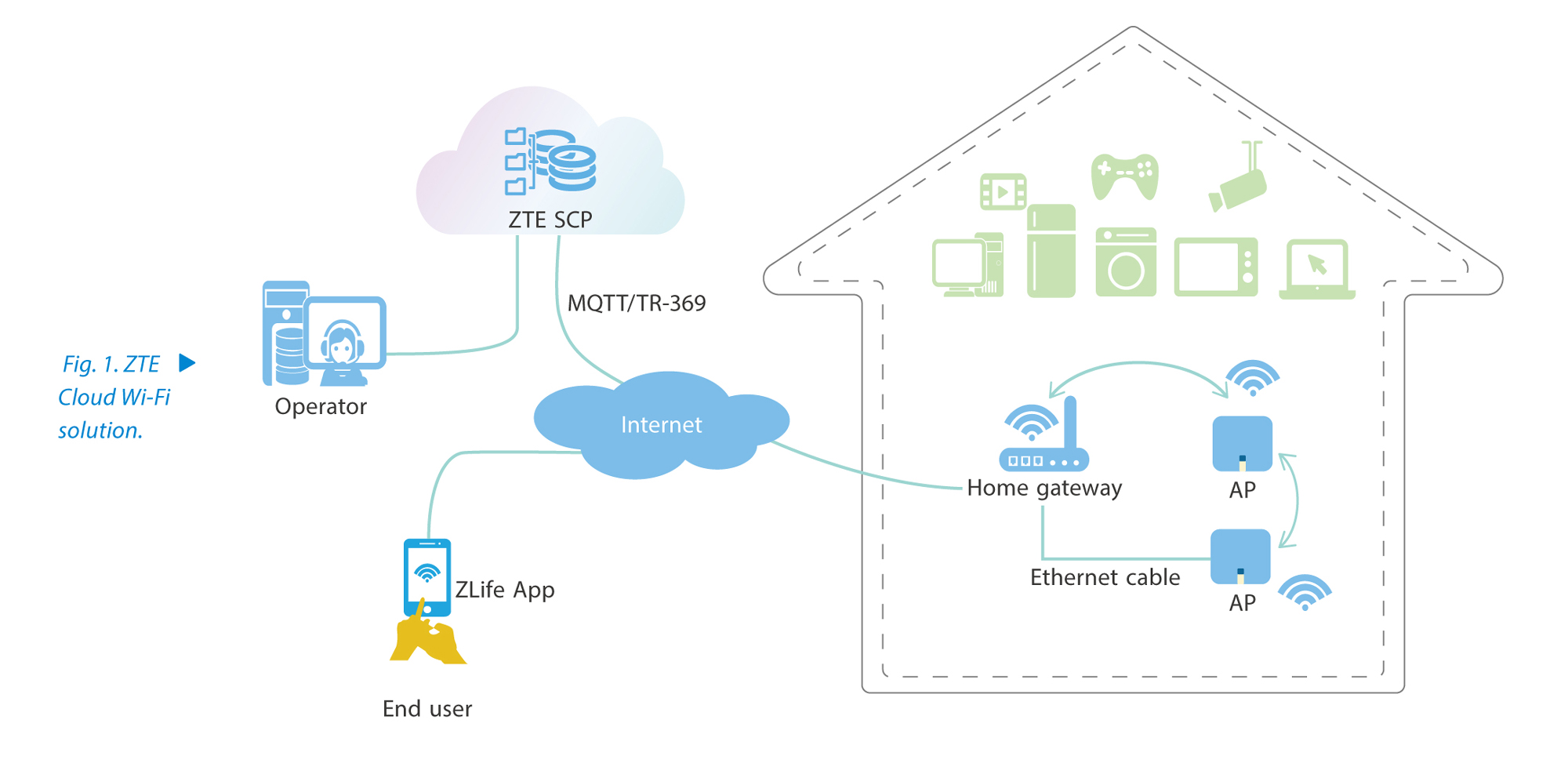Cloud Wi-Fi Creates Ultimate Home Broadband Experience
With its technology rapidly advancing, services continuously developing and applications constantly emerging, fixed broadband (FBB) has become an essential infrastructure in everyday life.
The Covid-19 pandemic has dramatically changed how people live and work. Previously the home only served as the place for people to live in, but now it is a multi-functional venue where life, work and entertainment are all concentrated. On the one hand, this shift accelerates the development of new services like remote working, videoconferencing, online education, and virtual reality (VR)/augmented reality (AR). On the other hand, it presents ever higher requirements for the user experience produced by home networks.
Against this backdrop, operators need to transform their operations and pay more attention to the experience of home broadband users. They should deploy premium FBB with differentiated features to improve user experience and enhance user satisfaction. The FBB deployments should also help operators implement new services and achieve good investment returns. Home networks mainly operate on Wi-Fi, whose quality is difficult to monitor. A home Wi-Fi network usually contains numerous devices with different capabilities. These factors combine to cause difficulties in user experience management. If operators are to shift their operational focus from developing broadband services to improving user experience, they have to tackle the network issues first.
Wi-Fi Network Experience Is Difficult to Manage
A good user experience sits at the heart of home broadband services. As advances in access network technology have mainstreamed 100 Mbps or even gigabit speeds, user experience is no longer bottlenecked by network bandwidth. The development of broadband has allowed an increasing number of devices to connect to the home network. Nowadays a home usually has 10 or more networked devices, most of which are connected via Wi-Fi. Wi-Fi has become a necessity for home users, generating more than 80% of home network traffic. On the flip side, the widespread adoption of Wi-Fi has also led to a surge in user dissatisfaction. Statistics show that around 60% of user complaints about home networks are related to Wi-Fi.
—Different homes have different layouts. A home usually has a complex internal environment and consumes a wide variety of network services. Additionally, the operating environment of Wi-Fi constantly changes as people move about and into or out of the home.
—It is difficult for traditional network management metrics to reflect the experience issues of Wi-Fi users. For example, poor coverage and heavy interference of Wi-Fi signals cannot be directly linked to troubles experienced by applications, such as stalling and disruption. Moreover, roughly 90% of the issues with the experience of applications get discovered and handled by operators only after users lodge complaints about them.
—The operation and maintenance (O&M) of a home network is largely conducted through truck rolls, which take a long time and hence decrease user satisfaction. Statistics indicate that O&M engineers spend 90% of their time on on-site troubleshooting. Frequent customer visits raise the O&M cost for operators.
—As services including online education, remote working, cloud gaming, and VR/AR grow in popularity, home users become more sensitive to issues like video stalling and image blurring. The difficulty of managing users' Wi-Fi experience will gain more prominence and seriously hamper operators' efforts to develop home broadband services.
To address the issues above, operators must build a visible, manageable and controllable network management system to accurately locate network faults and improve user experience.
ZTE Cloud Wi-Fi Solution Enables Visible O&M of Home Networks
In view of the pain points encountered by operators in operating and maintaining the networks, ZTE has launched a Cloud Wi-Fi solution that allows for intelligent O&M. The solution is centered around the smart cloud platform (SCP) developed by ZTE using artificial intelligence (AI) and big data technologies (Fig. 1). By mining the data produced by intelligent fault diagnosis of home network devices, the platform can help operators better operate and maintain home Wi-Fi.

Visibility and Manageability of Home Networks
The ZTE SCP visually displays the home network topology, including information about how the home gateway and access points (APs) are networked, the backhaul links, the quality of the links, and so on. Moreover, the platform allows operators to view the historical changes in the home network topology, the information of home network devices, and the curve of home network quality scores. From the home network topology interface, users can go to the device management interface on the SCP, where they can view the real-time status of devices and perform basic device management functions, such as configuring Wi-Fi parameters and changing the passwords for logging into the web GUIs of home network devices.
Diagnosis of Home Network Faults
The ZTE SCP implements Wi-Fi quality analysis based on the historical and real-time configuration and performance data reported by home network devices. Engineers can view a maximum of 30 days worth of data to pinpoint the exact time of a fault. The platform can automatically identify six types of faults, analyze them, and suggest solutions accordingly. Common faults can be diagnosed remotely and located quickly, and some of them can be fixed remotely.
Multi-dimensional Analysis and Optimization of Wi-Fi
The platform can analyze the key metrics of 2.4 GHz and 5 GHz Wi-Fi, including coverage, interference and connections, to evaluate the overall quality of the home network. Based on the Wi-Fi analysis and employing big data, the platform can also generate a dashboard for users with poor quality of experience (QoE) and use it to analyze the bottlenecks of the home network. After that, the platform can utilize the AI technology to produce a Wi-Fi template for a home and deliver it to the devices in the home network to dynamically optimize the Wi-Fi quality.
Through its three core functions, ZTE Cloud Wi-Fi solution helps operators remotely locate home network faults and optimize home Wi-Fi. In addition to reducing engineer visits and cutting O&M costs, the solution can decrease user complaints, improve user experience, and thereby boost operators' competitiveness.